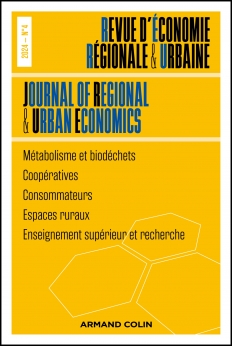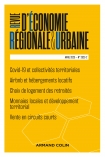
REVUE D'ÉCONOMIE RÉGIONALE ET URBAINE (4/2024)
Pour acheter ce numéro, contactez-nous
Recevez les numéros de l'année en cours et accédez à l'intégralité des articles en ligne.
Si la croissance générale de la population française est positive, on observe des différences de dynamiques qui reflètent à la fois des disparités régionales, mais aussi le rôle des villes dans la structuration spatiale des territoires. Les espaces en décroissance démographique sont nombreux, mais moins visibles. Beaucoup d’études ont souligné les décroissances internes aux villes, mais certains espaces ruraux connaissent depuis plusieurs décennies une baisse continue de leur population qui reste peu étudiée. Ce travail repose sur l’analyse diachronique des données censitaires françaises à l’échelle de la commune depuis les années 1990, en portant une attention particulière à la décennie 2010. Les résultats montrent la grande variété des situations régionales, mais aussi le rôle structurant des villes. Cela nous amène à relire les dynamiques de croissance observées selon le degré de proximité à la ville.
France’s overall demographic growth is positive, driven by natural and migratory balances. However, this growth is not evenly distributed throughout the country. There are many areas in decline, with global and local spatial patterns that need to be examined. Numerous studies have highlighted urban decline, while others have considered the regional dimension, but little attention has been paid to the persistent decline of some rural areas over several decades. The aim of this article is to examine all French rural municipality in order to highlight the spatial dynamics at work. Our hypothesis is that urban areas have an influence on the dynamics of the surrounding countryside, and that this influence is all the stronger the larger the cities’ population. To model this relationship, we rely on a diachronic analysis of French census data at the "commune" level over the last 25 years, with particular attention to the 2010s. The results confirm and qualify our hypotheses. On the one hand, it highlights the great diversity of regional situations and, on the other, it confirms the structuring role of cities. The results show that the influence of cities on rural communities is not linear and even disappears after a certain distance. We also show that cities do not have the same influence on their hinterland depending on their demographic weight. Finally, we show that this relationship remains stable over time, leading to an increase in spatial inequalities in population distribution. In addition to confirming the structuring role of cities, this article reminds us that we need to think about refining these models in the future.
